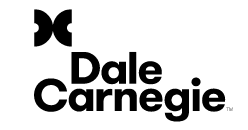Hello everyone, it is hard to believe we have made it halfway through the year already. The year has gone by fast. Last month we had our first lunch meeting and it was successful. This month we are having another lunch meeting with a change of venue, at Maggiano’s. One the boards primary goals this year is to increase our SEAoT chapter participation and activity. To achieve these goals, we are making changes and trying new ideas. As mentioned in the previous newsletter, we are making changes to the newsletter, meetings, sponsorship and adding happy hours, annual events, and scholarships. I know this is a lot of changes and new ideas and I think this is a good thing. I hope you are excited for these changes, I know I am. The board is trying hard to make our SEAoT chapter a success. I am thankful for all of the board members and volunteers who have stepped up.
Recently, a coworker of mine lost his brother to a tragic construction site accident involving a trench collapse. My heart and prayers go out to him and his family as they go through this period of grieving. While I do not know the details of accident, I think this serves as a good reminder that life is short, and we should always take safety precautions on construction sites. There are real dangers at construction sites, and safety should be taken seriously. In memory of my coworker’s brother, I would like to review some trenching and excavation safety facts according to OSHA:
- Between 2011 and 2016 there were 130 fatalities occurring in trenching and excavation operations. While cave-ins pose the greatest risk for excavation accidents, there are other potential hazards including falls, falling loads, hazardous atmospheres, and incidents involving mobile equipment. Keep heavy equipment away from trench edge. Keep surcharge loads at least 2 feet from trench edges. Do not work under raised loads.
- Trenches 5-feet deep or greater require a protective system unless the excavation is made entirely in stable rock. Trenches 20 feet deep or greater require the protective system be designed by a professional engineer.
- There are different types of protective systems, including sloping, shoring and shielding. Sloping involves cutting the excavation at an angle inclined away from the excavation, typically a 1:1 slope, but this is dependent on the soil type. Shoring involves installing supports to prevent soil movement and cave-ins. Shielding consists of trench boxes or supports that protect workers in the event of a cave-in.
- OSHA requires a competent person inspect trenches daily and as conditions change prior to workers entering the trench. Inspect at start of shift and following rainstorms.
- OSHA requires safe access and egress to all excavations 4 feet or deeper. Access must be located within 25 feet of all workers.
As we conclude the first half of this year, I want to thank our members for attending and being a part of the chapter. I hope everyone has a wonderful summer with hopefully some fantastic vacations and outdoor time with family and friends.
Regards,
Dan








